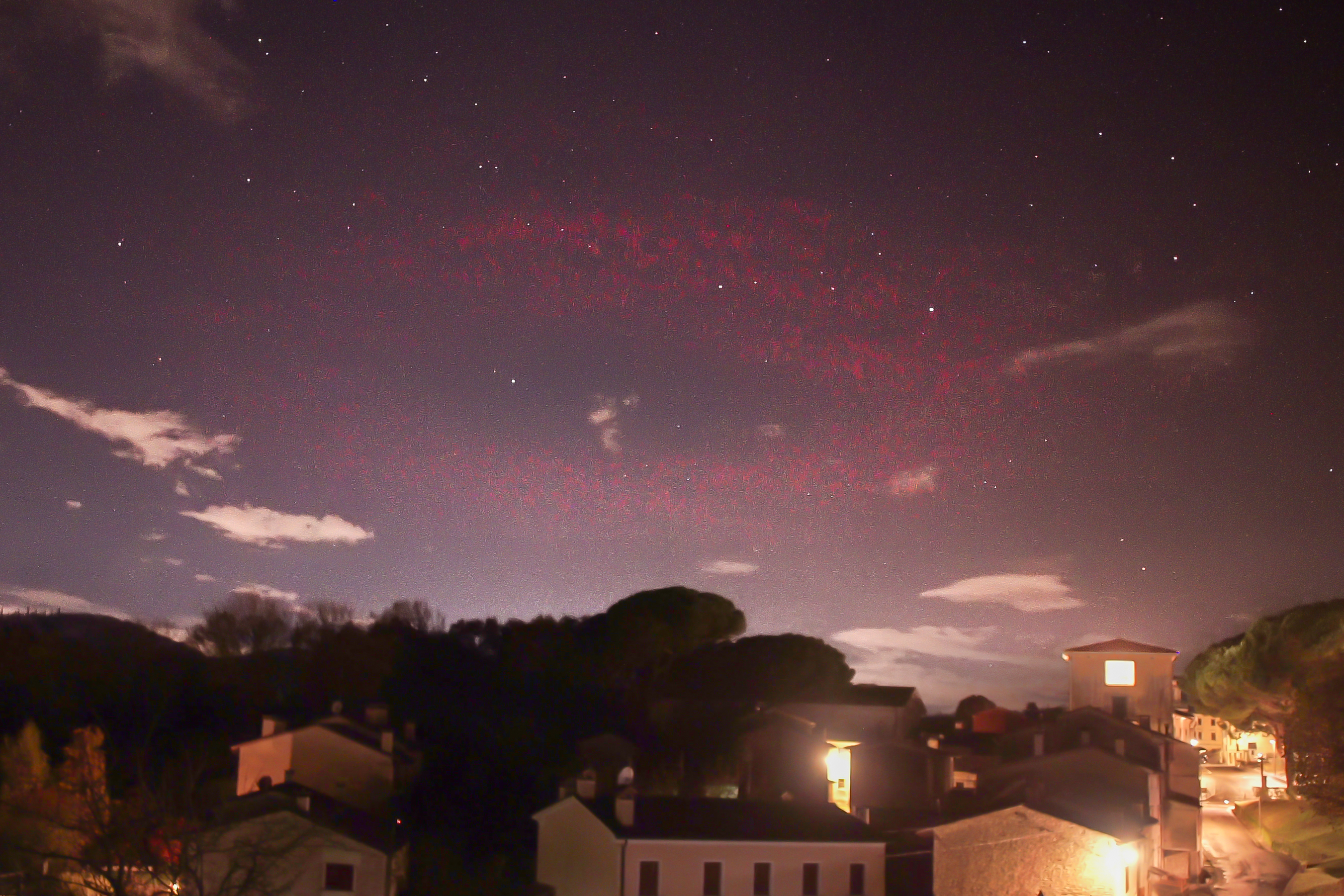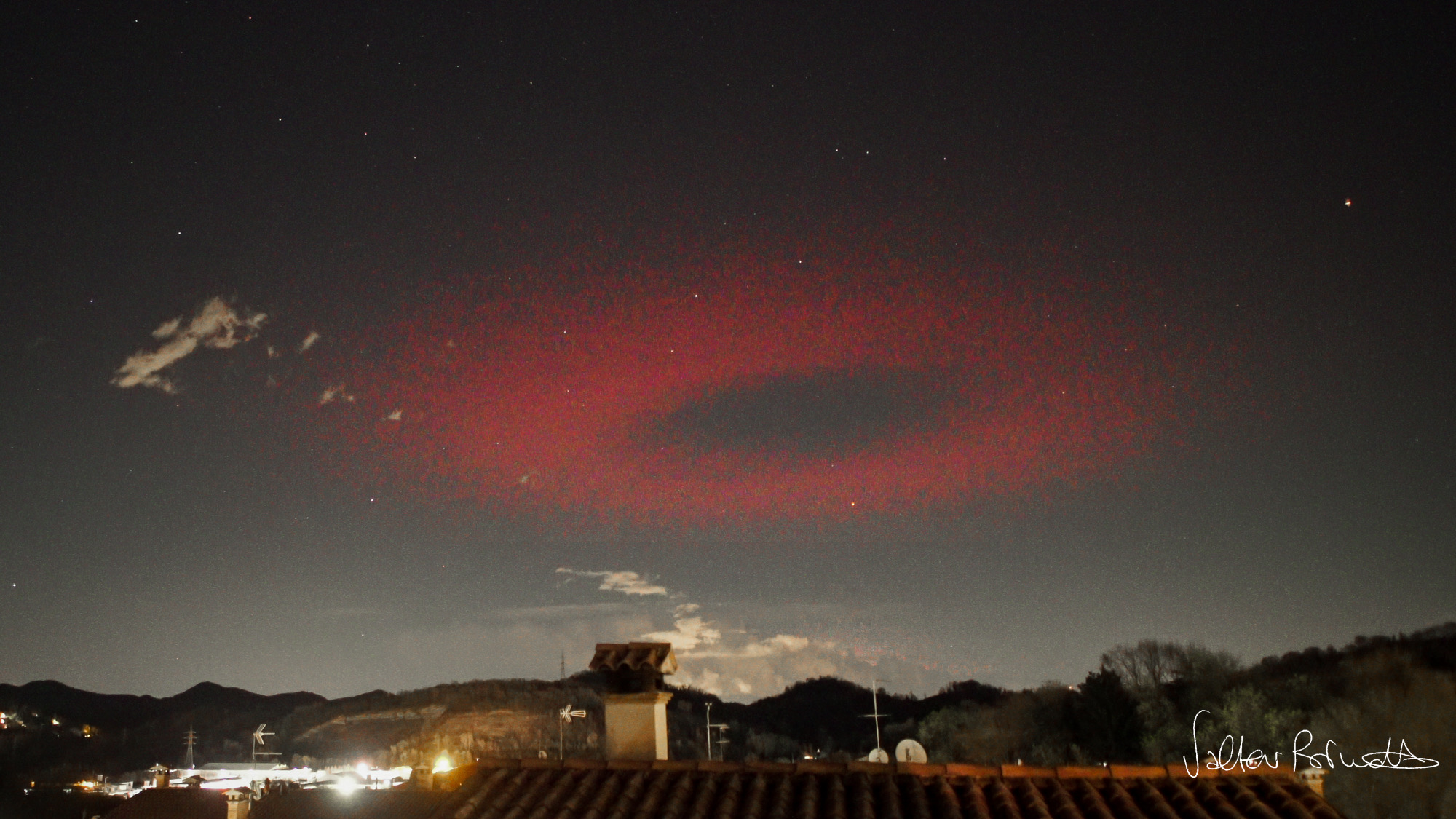For a split second over northern Italy, the night sky erupted with a colossal glowing red ring. One photographer was in the right place at the right time.
Elves are rapidly expanding disk-shaped flashes that can grow up to 300 miles (480 kilometers) across and last for less than a thousandth of a second, according to NOAA. They occur high above thunderstorms when a powerful electromagnetic pulse shoots upward into the ionosphere, the same ionized region of Earth’s upper atmosphere where auroras form.
Binotto had originally set out to try and photograph sprites, brief electrical discharges above thunderstorms that occur in the upper atmosphere, so he focused on a thunderstorm that had fewer clouds. “I didn’t capture any sprites, but fortunately, I managed to capture this Elve!” Binotto told Space.com in an email. He used a Sony A7S with a 20 mm f/1.8 lens at ISO 51,200. The photo is a frame taken from a video recorded at 25 fps.
“The ELVE was generated by a powerful negative lightning strike in a storm in Vernazza about 300 km south of me,” Binotto told Spaceweather.com. One bolt reached an extraordinary -303 kilo-ampères (the minus sign indicates the lightning’s polarity, not that the current was less than zero), producing an intense electromagnetic pulse (EMP) that lit up the ionosphere. For comparison, normal lightning typically carries just 10 to 30 kilo-ampères of current. This elve hovered about 100 miles (160 km) above Earth’s surface and spanned roughly 200 miles (320 km) in diameter, according to Spaceweather.com.
This isn’t the first time Binotto has photographed the eerie phenomenon. He captured an even more dramatic elve on March 23, 2023, also from his home in Possagno. The image shows the structure in even more remarkable detail as the red halo expanded across the sky.
Editor’s Note: If you snap an interesting Earth or space photo and would like to share it with Space.com’s readers, send your photo(s), comments, and your name and location to spacephotos@space.com.
Source link




